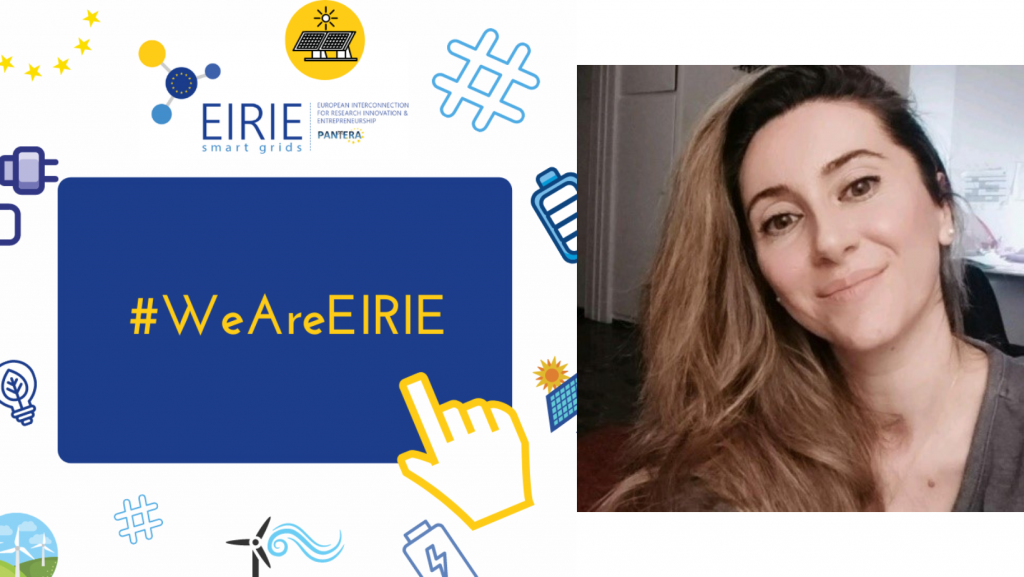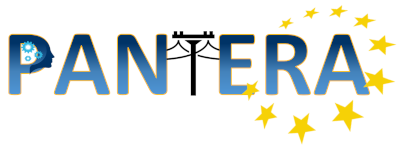PANTERA Project EIRIE Platform: Interview with Advisory Board member: Dr Christina Papadimitriou, Assist. Professor at Eindhoven University of Technology in the Netherlands

PANTERA Project
PAN European Technology Energy Research Approach (PANTERA) is an EU H2020 project aimed at setting up a European forum composed of Research & Innovation stakeholders active in the fields of smart grids, storage, and local energy systems, including policy makers, standardisation bodies and experts in both research and academia, representing the EU energy system.
One of the main deliverables of the PANTERA project is the EIRIE platform. It is EIRIE’s vision to create, through this multi-functional collaborative platform, a reference operational point to unify European activity, incentivize further investments in smart grids and support access to exploitable results that will enable further cooperation and bridge the existing gaps. (for more details click here)
An important contribution to the work of the consortium in managing and delivering valuable work in support of the R&I community of Europe with emphasis on the weaker countries where R&I calls for continuous support to raise their valuable contribution in the energy transition process is the Advisory Board. This was set up at an early stage of the project and they were a continuous source of feedback on the planned work for keeping the right track forward. Below we welcome the views of members of the Advisory Board who have allocated time to respond to targeted questions of the consortium.
Advisory Board member: Dr Christina Papadimitriou, Assist. Professor at Eindhoven University of Technology in the Netherlands
1) How conversant are you with the EIRIE platform and the functionalities offered? Can we identify together the areas that you consider most important for the R&I community?
I value all functionalities as highly relevant with the R&I community needs. Especially the search engine for the projects and resources and the data repository.
2) Let us concentrate on these 3 functionalities to understand them better and hear your opinion on what is achieved and especially what is missing if any to further enhance for future use. Suggested areas to concentrate on:
- Users and various roles to meet required attributes.
- Content catalogued in Types with well selected METADATA
- Repository Search Tool and arranged groupings
I can see of interest the following bullets for future development of these functionalities:
- Incorporating features like user recommendations, personalized notifications, or project matchmaking to enhance user engagement and facilitate relevant connections.
- Implementing a quality assurance process to validate and maintain the accuracy and consistency of metadata across content items.
- Allowing users to provide feedback or rate the quality and usefulness of content, helping to prioritize resources and improve content recommendations.
- Allowing users to save search queries, set up alerts for new content matching specific criteria, and track their search history for easy reference.
- Implementing user-friendly navigation and filtering options within groupings to enable users to explore content based on their specific interests or needs.
- Exploring the use of data visualization techniques or interactive maps to provide a visual representation of content distribution and aid in data exploration and discovery.
By continuously enhancing these functionalities, EIRIE can improve the user experience and foster collaboration among users. The platform can benefit from user customization and intuitive navigation to ensure that the diverse needs of the R&I community are met, further enhancing its value and impact for future use.
3) Collaboration among R&I community members is fundamental for achieving the high objective of leaving no one behind. Do you find our facilitation responsive and adequately functional? This includes the offered capabilities of knowing the needs and the challenges of the R&I community: How do you think that the knowledge creation corner and the regional corner shall be shaped/exploited in the future for higher impact?
Yes, I found it responsive and adequately functional with a great future potential. The knowledge creation corner and the regional corner should be further shaped and utilized in a way that empowers the R&I community, promotes collaboration, and addresses the specific needs and challenges faced by community members. By providing comprehensive content, collaboration tools, context-specific information, networking opportunities, and platforms for collective problem-solving, the impact of EIRIE can be maximized in achieving the high objective of leaving no one behind and driving innovation in the energy systems domain.
4) EIRIE has been developed using an agile, adaptable, and modular architecture capable of achieving the single point reference in knowledge for energy systems. How do you value this? How important it is for your work?
EIRIE’s capability to serve as a single point reference for knowledge in energy systems is highly valuable. It means that users can access a comprehensive and centralized source of information, making it easier to gather insights, perform research, and make informed decisions related to energy systems. The agile nature of EIRIE’s architecture implies that it can quickly adapt to changing requirements, emerging technologies, and evolving knowledge in the energy field. This agility can be crucial in keeping the system up to date and relevant as new advancements occur, ensuring that users have access to the latest information. As an example of the impact that EIRIE can have is as follows: Researchers are struggling to find validated data for their research activities. In case that they find them, they need a great deal of processing to be usable, exploitable, or combined together. On the other hand, EIRIE is offering this knowledge in standardized and universal way. Of course, knowledge is not only referring to data but to a lot more. The adaptability of EIRIE’s architecture allows it to accommodate various energy system models, frameworks, and approaches. This flexibility can be advantageous in addressing different user needs, supporting diverse research areas, and enabling customization based on specific requirements of the R&I community.
5) Naming EIRIE as the home for projects to make their published work visible and share their valuable results, how helpful you think this service will be to project consortia? To the R&I community at large?
I am highly convinced that EIRIE can serve as home for the research projects offering them great benefits. eNeuron project which I serve as the technical coordinator is already in good collaboration with EIRIE in sharing its outcomes. EIRIE can help the projects and the R&I community through the following ways:
Increased Visibility: By providing a centralized platform for publishing and sharing project results, EIRIE can enhance the visibility of projects and their outcomes. This increased visibility can attract the attention of potential collaborators, funders, and stakeholders who may be interested in the work, leading to new opportunities for partnerships and further research collaborations.
Knowledge Exchange and Collaboration: EIRIE can facilitate knowledge exchange and collaboration among project consortia and the wider R&I community. By making project results easily accessible, researchers and stakeholders can learn from each other’s work, build upon existing findings, and identify synergies and potential areas for cooperation. This can foster innovation, avoid duplication of efforts, and promote the development of more robust and impactful research projects.
Dissemination of Best Practices: Sharing valuable project results through EIRIE can contribute to the dissemination of best practices and lessons learned. Researchers can highlight successful methodologies, approaches, and strategies that have proven effective in addressing energy system challenges. This information can guide future projects, inform policy decisions, and accelerate progress in the field.
Networking and Community Building: EIRIE can serve as a hub for networking and community building within the R&I community. Researchers, industry professionals, policymakers, and other stakeholders can connect, share ideas, and engage in discussions related to energy systems. This collaborative environment can lead to the formation of communities of practice, the exchange of expertise, and the establishment of new research networks.
Impact Measurement: EIRIE’s platform can help project consortia and the R&I community in assessing and measuring the impact of research projects. By providing a centralized repository of published work, it becomes easier to track the reach and utilization of project results. This data can be valuable for project evaluation, reporting to funding agencies, and demonstrating the broader impact of R&I efforts.
6) Looking to the future. Can you name an area that we should give more attention? Can you qualify?
The future outlook is that EIRIE remains up to date and enrich its content. To this end integrating AI (artificial intelligence) and ML (machine learning) techniques within EIRIE’s architecture can unlock new opportunities to leverage data, improve decision-making, and enhance the overall functionality of the platform. This holds true especially for the living tools as maturity index tool. By harnessing the power of AI and ML, EIRIE can provide users with advanced analytics, personalized recommendations, predictive insights, and continuous learning capabilities, ultimately advancing knowledge and driving innovation in the energy systems domain.

